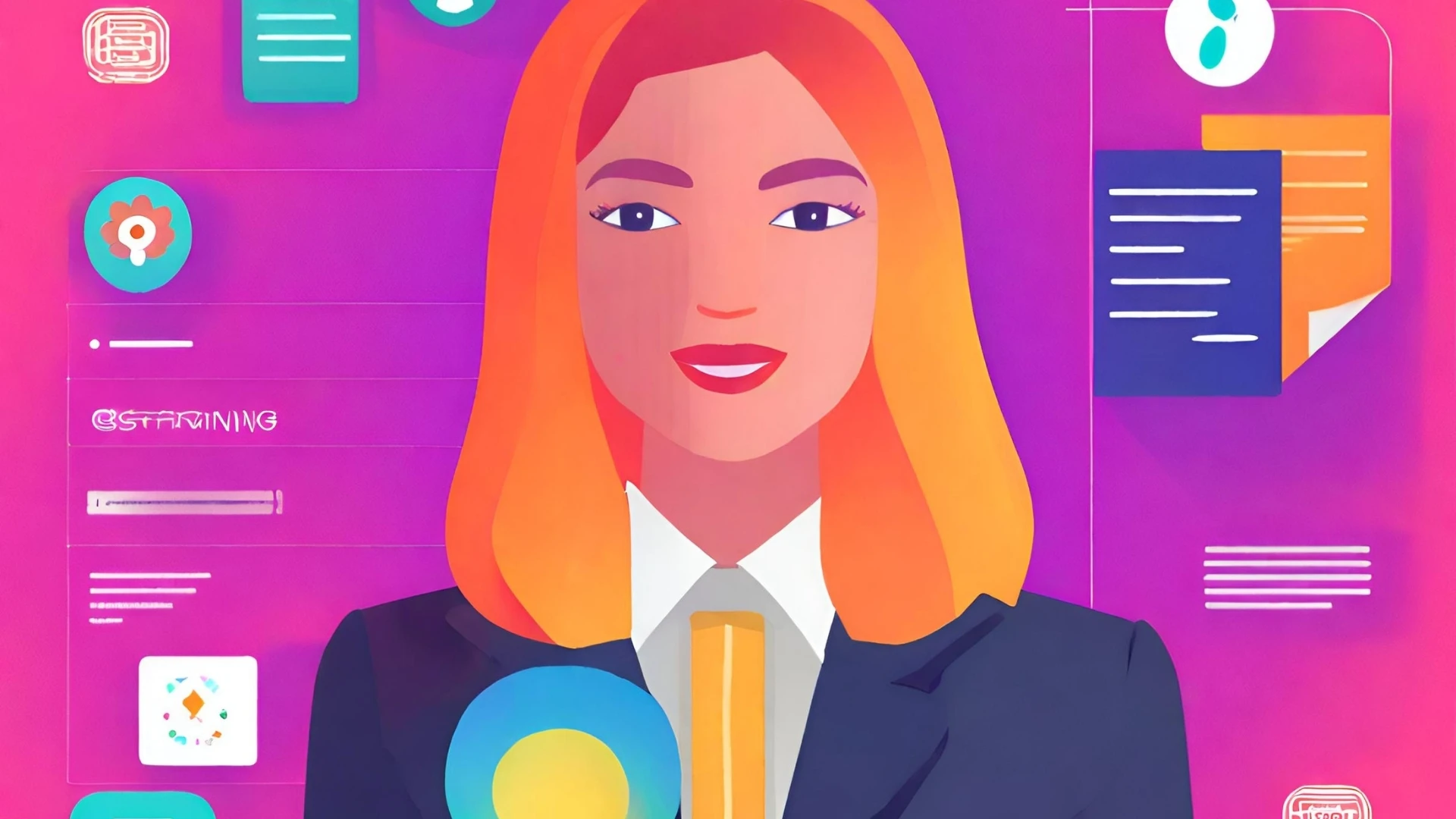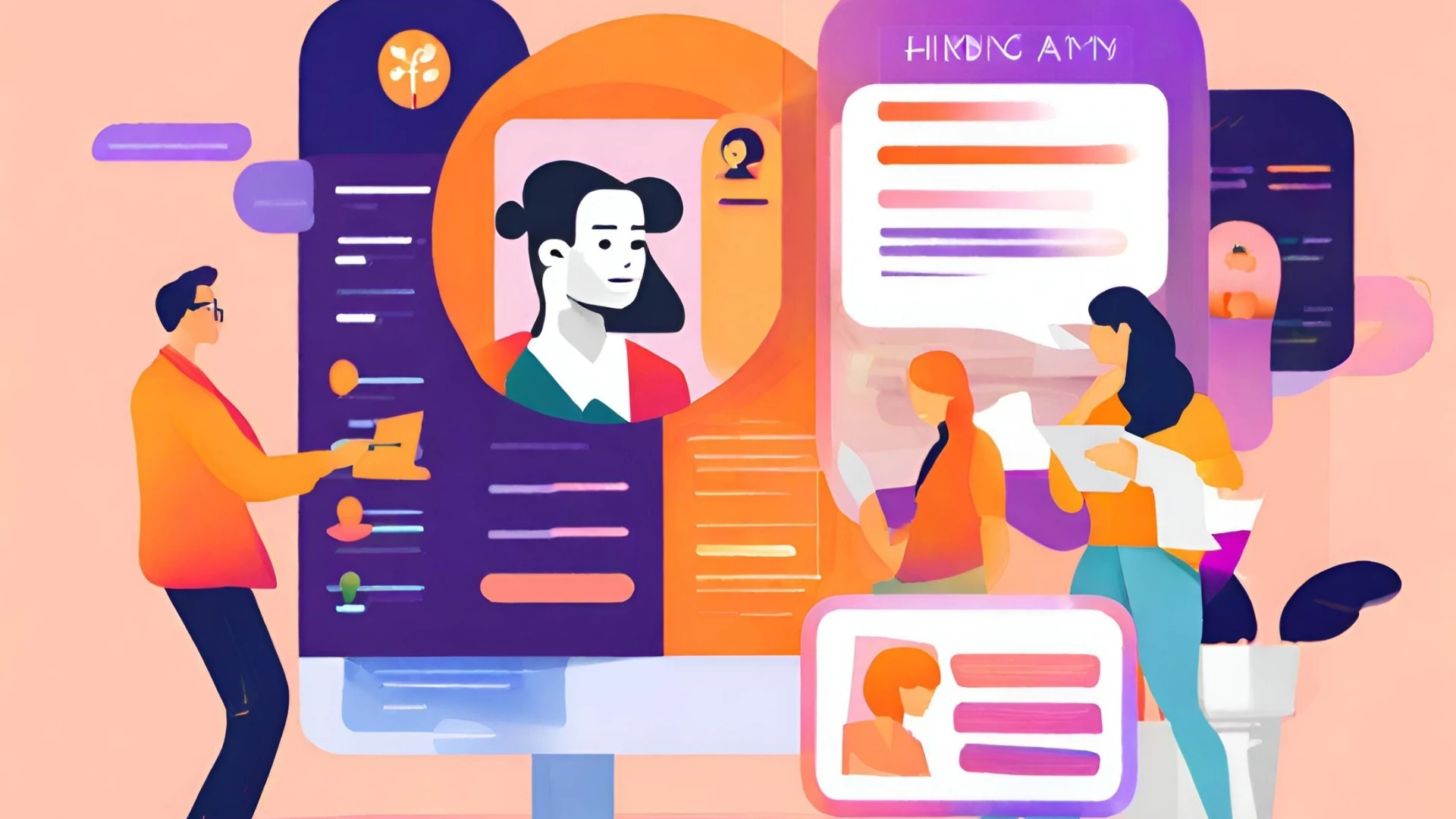In today’s competitive job market, utilizing AI for hiring has become increasingly popular among businesses.
This blog post will explore the benefits, challenges, and best practices of incorporating artificial intelligence in the recruitment process.
Discover how AI can streamline hiring procedures, address potential obstacles, and enhance overall recruitment efficiency.

The Rise of AI in Hiring: A Revolution with Responsibility
The world of recruitment is undergoing a significant transformation, driven by the power of Artificial Intelligence (AI). AI tools are rapidly finding their place in various stages of the hiring process, from sifting through resumes to analyzing candidate interviews.
While this technological advancement offers numerous benefits, such as improved efficiency and reduced bias, it also presents certain challenges and ethical considerations.
This blog post delves into the intricate dance between AI and human expertise in the realm of hiring. We will explore the advantages and disadvantages of implementing AI in the recruitment process, providing best practices for responsible integration and ensuring a fair and ethical experience for all candidates.
Additionally, we will take a glimpse into the future of AI in hiring, outlining exciting possibilities while acknowledging the crucial role of ethical considerations in its continued development.
Using AI for Hiring: A Balanced Approach
Artificial intelligence (AI) is transforming the recruitment landscape, offering potential benefits in efficiency, candidate experience, and selection accuracy.
However, it’s crucial to approach AI implementation with a balanced perspective, considering both its advantages and limitations. Here’s a breakdown:
Benefits of using AI in hiring
- Improved Efficiency: AI automates tedious tasks like resume screening and scheduling interviews, freeing up recruiter time for more strategic activities like candidate evaluation and relationship building.
- Enhanced Candidate Experience: Chatbots can answer frequently asked questions and provide real-time application updates, improving the candidate experience.
- Reduced Bias: AI can help mitigate unconscious bias in the hiring process by objectively evaluating candidates based on pre-defined criteria, such as skills and experience.
- Data-Driven Decisions: AI-powered analytics provide insights into candidate data, allowing recruiters to identify top talent and optimize their hiring strategies.
Challenges of using AI in hiring
- Bias in Algorithmic Design: AI algorithms are only as good as the data they are trained on. If the training data is biased, the AI tool may perpetuate that bias in its decision-making.
- Ethical Concerns: AI-powered assessments and personality tests raise ethical concerns regarding privacy and the potential for discrimination.
- Overreliance on Automation: Replacing human judgment entirely with AI can lead to overlooking valuable qualities like cultural fit and soft skills.
- Job displacement: Some fear that AI may automate certain recruiting tasks entirely, leading to job losses in the HR sector.
Best practices for using AI in hiring
- Transparency: Be transparent about how AI is used in the hiring process and ensure candidates understand how their data is collected and utilized.
- Human oversight: Maintain human involvement in the decision-making process. Use AI as a tool to assist with candidate selection, not replace human judgment entirely.
- Regular evaluation: Regularly audit and evaluate AI tools for bias and ensure they are aligned with your company’s values and hiring practices.
- Focus on skills and experience: Prioritize evaluating job-relevant skills and experience over personality assessments or other AI-driven measures that may be discriminatory.
By thoughtfully integrating AI into your recruitment process while addressing its limitations and potential biases, you can leverage its benefits to improve your hiring efficiency and effectiveness while ensuring a fair and ethical experience for all candidates.

Finding Harmony: Integrating AI with the Human Touch
The key to successful AI implementation in hiring lies in creating a harmonious collaboration between technology and human expertise. Here’s how to achieve that balance:
- Clearly define the role of AI: Establish a clear understanding of the specific tasks for which AI will be used. This could involve resume screening, initial skills assessments, or scheduling interviews.
- Train and empower recruiters: Equip your recruiters with the necessary knowledge and skills to work effectively alongside AI tools. This includes understanding how AI works, recognizing potential biases, and interpreting data insights to make informed decisions.
- Focus on the human element: While AI streamlines certain tasks, prioritizes the human element in building relationships and assessing cultural fit. Utilize face-to-face interactions, in-depth discussions, and scenario-based assessments to gain a comprehensive understanding of a candidate’s potential.
By creating a collaborative environment where AI complements and enhances human judgment, you can cultivate a more efficient, effective, and ethical hiring process.
Building a Diverse and Inclusive Hiring Pipeline
AI can play a critical role in promoting diversity and inclusion in your hiring practices. Here are some strategies to leverage its potential:
- Diverse training data: Ensure that the data used to train your AI tools is diverse and representative of your desired candidate pool. This helps mitigate bias and fosters a more inclusive hiring process.
- Focus on objective criteria: Prioritize skills and experience over subjective measures like language or cultural references that might unintentionally disadvantage certain groups.
- Targeted outreach: Utilize AI tools to identify potential candidates from diverse backgrounds and underrepresented communities, expanding your talent pool beyond traditional channels.
By implementing these strategies, you can leverage the power of AI to build a more inclusive hiring pipeline and attract a wider range of talented individuals, ultimately leading to a more diverse and successful workforce.
Frequently Asked Questions (FAQ) about AI in Hiring
Q1: Is AI going to replace human recruiters?
AI is unlikely to completely replace human recruiters in the foreseeable future. While it can automate specific tasks like resume screening and scheduling, the human element remains crucial in aspects like building relationships, evaluating cultural fit, and conducting in-depth interviews.
AI is more likely to act as a supportive tool that enhances the recruiting process, rather than replace it entirely.
Q2: How can I ensure my AI hiring tools are unbiased?
Here are some key steps to ensure unbiased AI hiring tools:
– Use diverse training data: Train your AI tools on data that reflects the diversity of your desired candidate pool.
– Focus on objective criteria: Prioritize skills and experience over subjective measures that might unintentionally disadvantage certain groups.
– Regularly audit your AI tools: Regularly evaluate your AI tools for bias and adjust them as needed.
– Maintain human oversight: Utilize human judgment in the final stages of the hiring process to assess cultural fit and prevent solely AI-driven decisions.
Q3: What are the ethical considerations of using AI in hiring?
There are several ethical considerations when using AI in hiring:
– Transparency: Be transparent with candidates about how AI is used in the hiring process and how their data is collected and utilized.
– Avoidance of bias: Take steps to mitigate bias in your AI tools and ensure fairness throughout the hiring process.
– Respect for privacy: Ensure that candidate data collected through AI tools is used responsibly and in accordance with data privacy regulations.
Q4: How can I get started with using AI in hiring?
Several AI-powered hiring tools are available on the market, catering to different needs and budgets. Carefully research and choose tools that align with your specific requirements and company culture.
Start by integrating AI for simpler tasks like resume screening and gradually expand its use as you gain experience and confidence.
Q5: What are the benefits of using AI in training and development?
AI can be used to personalize training and development programs for employees, tailoring content and delivery methods to individual needs and learning styles. This can lead to improved learning outcomes and enhanced employee engagement.
By addressing these frequently asked questions, we aim to provide a more comprehensive understanding of AI in hiring and its implications.
Read More:
- Coding Interviews: Candidates use ChatGPT to Cheat in Coding Rounds
- What to Do When You Dislike Your New Job
- Career Gap: What It Is, Why It Happens, and How to Explain It to Employers
Conclusion: Embracing the Future of AI-powered Hiring
AI presents exciting possibilities for the future of hiring, offering the potential to streamline processes, attract diverse talent, and create a more efficient and effective recruitment experience.
However, harnessing these benefits necessitates a responsible approach, emphasizing ethical considerations, careful implementation, and continuous improvement.
By fostering human-AI collaboration, prioritizing transparency and fairness, and actively mitigating bias, organizations can leverage the power of AI to build a future-proof hiring strategy that not only attracts top talent but also fosters a diverse and inclusive workforce.
As AI continues to evolve, staying informed about best practices and ethical considerations will remain essential in navigating this dynamic landscape and ensuring responsible AI integration for a successful and ethical future of hiring.
I don’t usually read blog postings, but after reading this one, I had no choice but to try. Your writing style astounded me greatly. I appreciate your wonderful post.
Thank you so much for your encouraging feedback! It’s wonderful to hear that the post captured your attention and provided you with a delightful reading experience. Your appreciation means a lot, and it motivates me to continue creating content that hopefully will keep you coming back for more.
Thank you for taking the time to share your thoughts!
Obrigado, há muito tempo que procuro informações sobre este assunto e a sua é a melhor que descobri até agora. Mas e em relação aos resultados financeiros Você tem certeza em relação ao fornecimento
Hello i think that i saw you visited my weblog so i came to Return the favore Im trying to find things to improve my web siteI suppose its ok to use some of your ideas
Hello! 😊
Thank you for visiting my blog and for your kind words. I’m glad you found some ideas useful. Feel free to use any tips or suggestions from my site to improve your own. If you have any specific questions or need further advice, don’t hesitate to ask. Let’s keep sharing and learning from each other!
Best regards,
JobInterviewTips.in